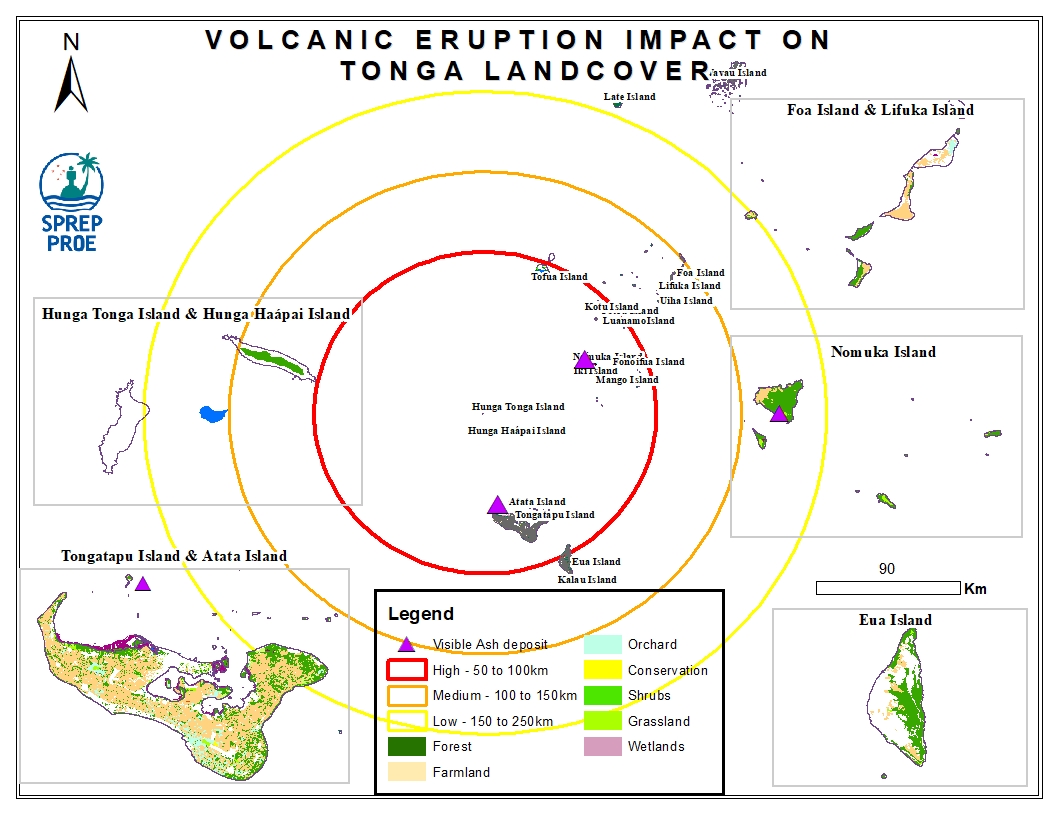The Tonga NPOA (sharks) is a policy guideline that ensures conservation and management of oceanic sharks in the Kingdom’s fisheries waters. It also promotes long-term sustainability and optimum use of sharks in Tonga’s Tuna longline fishery in accordance to national development policy frameworks, and special needs and requirements to develop and commercialise its fisheries. In the medium-long term, the Plan serves to minimize any adverse environmental effects of fishing on oceanic shark species.
A high level policy document that provides guidance to the management and development of the deep water fisheries in the periods of 2017 - 2019
Marine pollution in the Pacific. Regional data
Tropical Cyclone Gita hit the main island of Tongatapu and the island of ‘Eua on the night of Monday, 12th February 2018 as a destructive category 4 storm, causing severe damages to these two islands which consists of about 80% of the Total population of Tonga.
This assessment uses the post-disaster data collected by the Statistical Department to describe the characteristics of the affected population, nature and spatial concentration of the damage, and the aid required and received at the time of the interview by the Tongan population.
Photos from the meeting....
Resources for the SPREP Inform workshop in Samoa
Redlist species of Samoa as of 09/04/2019
A Public Data License Agreement available for use by PICs for their Environment Data Portals
The World Database on Protected Areas (WDPA) is the most comprehensive global database of marine and terrestrial protected areas, updated on a monthly basis, and is one of the key global biodiversity data sets being widely used by scientists, businesses, governments, International secretariats and others to inform planning, policy decisions and management. The WDPA is a joint project between UN Environment and the International Union for Conservation of Nature (IUCN).
A recently published paper, titled “Coastal proximity of populations in 22 Pacific Island Countries and Territories” details the methodology used to undertake the analysis and presents the findings. **Purpose** * This analysis aims to estimate populations settled in coastal areas in 22 Pacific Island Countries and Territories (PICTS) using the data currently available. In addition to the coastal population estimates, the study compares the results obtained from the use of national population datasets (census) with those derived from the use of global population grids.
This list of indicators was developed through the Inform project at SPREP for use by Pacific Islands countries (PICs) to meet their national and international reporting obligations. The indicators are typically adopted by PICs for their State of Environment reports and are intended to be re-used for a range of MEA and SDG reporting targets. The indicators have been designed to be measurable and repeatable so that countries can track key aspect of environmental health over time.
This paper highlights the seriousness of the “biodiversity crisis” on atolls and the need to place greater research and conservation emphasis on atolls and other small island ecosystems. It is based on studies over the past twenty years conducted in the atolls of Tuvalu, Tokelau, Kiribati, the Marshall Islands and the Tuamotu Archipelago of French Polynesia. It stresses that atolls offer some of the greatest opportunities for integrated studies of simplified small-island ecosystems.
State of Environment (SoE) reports provide in-country partners with a process to gather data on current environmental indicators, document their status, and formulate a plan for keeping these indicators on track or developing policies and programs as needed. This SoE Toolkit dataset contains resources that serve as guides to help create up-to-date State of Environment reports.
License agreements with summary table and user guide for PICs Environmental Data Portals
marine material spillage international oceans
The Strandings of Oceania database is a collaborative project between SPREP, WildMe and the South Pacific Whale Research Consortium to record stranding and beachcast data for whales, dolphins and dugongs throughout the Pacific. We use a platform called Flukebook. An account is needed to view or use data within Flukebook but the data is available for download here. You can submit data direct into Flukebook (preferably while logged in) or send a completed data form to SPREP for upload. Guidance on using the database is available :
This dataset contains all spatial data that is related to the Tonga volcanic eruption. Maps produced are derived from credible data source such as UNOSTAT and UNITAR.
